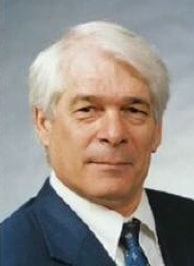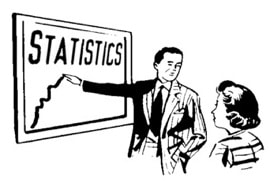Michael J. Metz, Ph.D.

Michael J. Metz, Ph.D.
Dr. Metz has been a practicing audiologist for over 45 years, having taught in several university settings and, in partnership with Dr. Bob Sandlin, providing continuing education for audiology and dispensing in California for over two decades. Mike owned and operated a private practice in Southern California for over 30 years. He has been professionally active in such areas as electric response testing, hearing conservation, hearing aid dispensing, and legal/ethical issues. He continues to practice in a limited manner in Irvine, California.
Hearing Aid and Audiology Future
Data always speaks louder than words and is generally more concise than opinion – sometimes in spite of the nature of the data and no matter who offers the opinion. So, if any in the audiology community wishes to know why there is a “storm” involving hearing aids in their profession, here are some suggestions for beginning to form reasonable opinions that are at least somewhat reasonably derived from data.
The Audiology Storm
First, let us consider the “Audiology storm” idea that was discussed by Dr. Jerry Northern in his recent blogs in the Hearing Health and Technology Matters Internet site.
- Just what is the wholesale pricing that the “big box” stores get from manufacturers?
- How much difference is there between what they get and what any individual dispenser could get?
- What would they have to do to get comparable pricing?
- Are there any legal or ethical problems involved in what these clinicians would have to do?
- Are there examples of other professional groups establishing similar wholesale pricing structures? Additionally, did any of these groups run into any legal, ethical, licensing, or other “consumer-oriented” problems?
- If audiologists get pricing that is almost as close to that of the “big box” stores, what would they have to do to attract and keep patients/customers from those “big box” places?
- For years, the industry argument from all who sampled and published their survey results (and opinions) was that pricing was not a very big motivator for purchasing hearing devices. Were these “experts” wrong? Did they sample correctly? Was there perhaps another agenda that their numbers served?
- Are there any other factors, tests, methods, services, etc., other than pricing that comes into play? Can audiology deliver these “whatevers” adequately, exclusively, cost-effectively for consumers, and profitably for itself?
If there are those who think that a big, cooperative audiology buying group would solve the “storm” problems, it might prove illustrative to find data such as that related to the following:
- The associated costs of running a buying group.
- The number of people who are delinquent in paying for goods, both in and out of buying groups.
- Is there any data suggesting that smaller offices are generally worse or better at paying their bills?
- Would this audiology buying group not sell to ENT or other physicians’ offices? (Recall that the American Academy of Audiology data shows that a substantial number of audiologists work in these offices.)
- The alternative and competitive methods of distribution that might reasonably spring up from other groups, other than audiology, who sell these products—manufacturers, hearing aid dealers, physicians, etc.?
- Which of the present buying groups would “give up” their place in favor of the big, “united” group model?
- Someone might want to seek a true, unbiased legal opinion about such a buying group. That is better than relying on the opinion of an attorney in the employ of a person, group, or organization.
- If Medicare allows patients to seek audiologists without first seeing a personal physician, does this change in procedure put pressure on the methods used by audiologists? Would this be in support of or in opposition to such a large buying group?
Hearing Aid Obituary
With respect to a series of posts by Dr. Wayne Staab on the same HearingHealthMatters.org website starting in November of 2014, his comments and data seem to reflect the same types of conflicts as those expressed by Northern. That is, hearing aids as we have known them—those devices that since the 1970’s or so have given life (money) to many in the field of audiology—may be on the way out, or at least partially replaced and/or expanded with devices having other names.
- For all the opinion about why a hard-of-hearing adult does not use amplification, has anyone ever looked closely at those patients/clients who have failed in their use of these devices? Is there any evidence of a major complaint among these folks? Would it help us to really know why they did not succeed?
- Is there any hard evidence of any factor(s) that contribute to the success of patients? Or, are there clinicians who have a demonstrably (not anecdotally) better success rate?
- Have there been any unbiased, scientifically-correct studies showing benefits from amplifying devices that are not called hearing aids? Or, just to make it clearer, is there any data that would support audiology and hearing aids in preference to PSAPs and big-box stores?
Caveats
Caveats are in order. There are likely some more interesting questions that could go towards accumulating some illustrative data. But, equally important, there are some questions that probably should not be asked, as there would seem to be a high likelihood of finding data that would not support the assertions of many dispensing audiologists.
- If all the suggested fitting protocols are necessary and/or recommended by most all professional organizations, why aren’t these methods used universally by all audiologists or anyone else seeking to satisfy patient needs? This indirectly speaks to the “unbundling” of services that has been advocated by a few for many years.
- How long does it take for annual “new and better” hearing aids to reach the ears of the hearing impaired customer? Contrast this to the research that would support recommending and using these higher-priced, “revolutionary” products.
- What is the comparative rate of dissatisfaction (or return for credit, “in-the-drawer”, or whatever) for audiologists, sales offices, “big box” suppliers, OTC (PSAPs), and other methods of distribution? (All available data, minimal as it is, would seem to indicate that looking at such numbers has a limited chance of casting a “good” light on differentiating between distribution methods or groups.)
Finally, for those who think that we are in times of, “the sinking of audiology in this perfect storm”, or the “death of hearing aids as we know them”, we should recall that when one door closes, many times another door opens. If audiology really does provide worthwhile, cost-effective, exclusive services to hearing impaired patients, the field will somehow find a way to prevail and weather this “storm”. If, on the other hand, we have outlived our usefulness to the hearing impaired with respect to the sale of hearing aids, perhaps we should use this storm to “find a better boat”, or “swim to another island”, or “seek a safer harbor”.







Thanks, Mike. All the right elements for a productive discussion. Aristotle would endorse your line of inquiry.
WoW! You told it like it is.
Looks like Geoff is right, we need to add PSAP’s and Lyric type devices to our dispensing office products and learn how to get with the program. Day Light is Burning.
Well thought out and written, — and provocative, Mike. You have asked all the pertinent questions…and for most of those questions, we have no answers — and certainly no data.
Thanks Mike for the great and long list of questions.
However, I surmise that you are correct in that the audiological community really doesn’t want the answers to some of them.
This especially, as there seems little evidence that points to better results, or happier patients from the administration of all of those bundled ‘best practices’ protocols so recommended, or even mandated in many places.
Further, there has been no evidence I am aware of that points to a better patient result, or happier patient for having been fit by an audiologist rather than, as you put it a ‘dealer’.
Nor, do I believe the audiologist community as a whole would want to know such data.
As my uneducated guess is that we would find little, if any difference, or even a bias toward the results of requiring less, rather than more education for the delivery of those devices we have known here to fore as hearing aids.
Like it or, not change is upon us all, audiologist and ‘dealer’ alike. Providing the consumer with perceived value through an experience that they enjoy and want to repeat, and even tell their friends about would seem a logical way forward.
Perhaps a couple of additional questions are in order?
Are we providing the consumers we want with an experience that they enjoy and want to repeat?
Or, are we seeking to validate our educations, and egos by demanding, or even mandating that every consumer be treated to an ever growing list of protocols of questionable value, simply because it’s been deemed amongst those ‘best practices’?
Love Mike’s report and analysis. All Audiologists please understand that the stats are NOT with us and the only door to survival is to buy the products at real wholesale prices. Retail buyers get huge discounts and the traditional venues pay so much more just for the privilege of working in a traditional setting like a private practice, ENT office, hospital or University. Act now to form a TRUE transparent GPO for Audiologists.
Dr. Metz,
Thank you for your thoughtful concern, for bringing light to these critical issues, and for encouraging dialogue.
I also enjoy hearing from Jerry Northern, who I understand may have served as a consultant for Costco.
Big Box department stores are selling top of the line Phonak, Resound, Rexton, etc. to retail consumers for approximately what the average Audiology private practice pays these products. If Audiology is not able to achieve pricing parity, the trend of private practice destruction would likely continue and lead within a few years or less to the removal of private practice from the distribution chain. This is a case of simple economics overwhelming professionalism, training, and quality of care aspects of dispensing.
The existing Buying/Management Group middle men schemes that often place Audiologists in precarious legal and ethical positions serve to perpetuate the predatory pricing models that harm Audiology and, in my opinion, the hearing impaired.
In order to achieve pricing parity, Audiology needs to leave the questionable Buying/Management Group practices behind and form a transparent GPO like hospitals have chosen.
There is a pledge that Audiologists can sign.
Mike has nailed the problem. The so-called “volume” discount that an individual dispenser may get from a single hearing aid manufacturer will still have the cost per unit being close to what the “big box” stores are charging. In addition, what Mike has pointed out is that there are many questions in need of answers now for which there are no data. For those audiologists for whom dispensing is the core of their practices, these are indeed troubled times. Were I to advise a person considering going into audiology, I would try to steer him or her away from the current private-practice model. Even hospitals are not safe havens. A large hospital in our area recently closed two of their “audiology” offices because those offices weren’t dispensing a sufficient number of hearing aids.
A transparent GPO may be a solution for the near term. For the long term, getting answers to Mike’s questions and getting audiologists to provide unique experiences in the hearing aid acquisition and follow-up support processes that are of real value to hearing aid users may be the salvation of the small-office private practice.